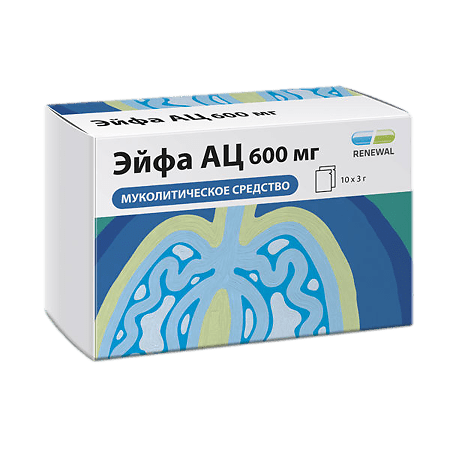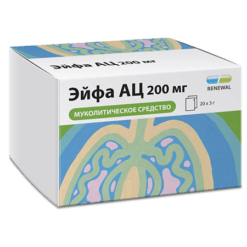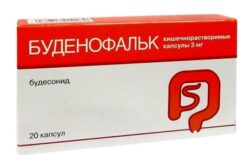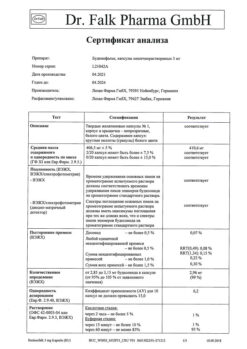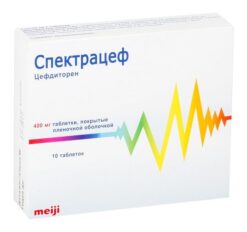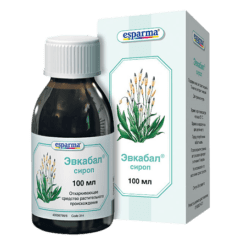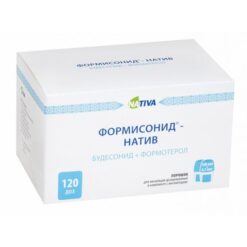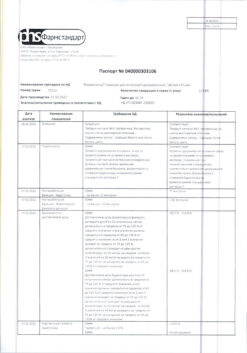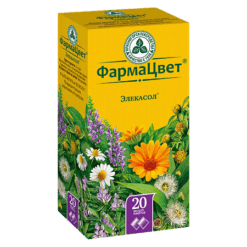No products in the cart.
Eifa AC, 600 mg 3 g 10 pcs
€4.35 €3.87
Description
Pharmacodynamics
It has antioxidant effect due to the presence of SH-group that can neutralize electrophilic oxidative toxins. Acetylcysteine easily penetrates into the cell and is deacetylated to L-cysteine, from which intracellular glutathione is synthesized. Glutathione is a highly reactive tripeptide, a powerful antioxidant, cytoprotector that traps exogenous and endogenous free radicals and toxins. Acetylcysteine prevents depletion and promotes increased synthesis of intracellular glutathione that participates in redox processes of cells, thus contributing to detoxification of harmful substances. This explains the effect of acetylcysteine as an antidote in paracetamol poisoning. The main role of acetylcysteine is to maintain proper levels of glutathione, thus providing cell protection. Acetylcysteine protects alpha-1-antitrypsin (an elastase inhibitor) from the inactivating effect of HOCL, an oxidant produced by myeloperoxidase of active phagocytes. It also has anti-inflammatory effect (by inhibiting the formation of free radicals and active oxygen-containing substances responsible for the development of inflammation in lung tissue).
Pharmacokinetics
Absorption
Acetylcysteine is well absorbed when taken orally. It is immediately deacetylated to cysteine in the liver. In the blood there is a mobile balance of free and bound to plasma proteins acetylcysteine and its metabolites (cysteine, cystine, diacetylcysteine). Because of the strongly pronounced effect of “first passage” through the liver, the bioavailability of acetylcysteine is about 10%. Distribution Acetylcysteine is distributed both as unchanged (20%) and in the form of active metabolites (80%), penetrates into the intercellular space, is mainly distributed in the liver, kidneys, lungs, bronchial secretion. Distribution of acetylcysteine varies from 0.33 to 0.47 l/kg, its maximum concentration in plasma is reached 1-3 hours after oral administration and is 15 mmol/l, binding to plasma proteins is 50% in 4 hours after administration and decreases to 20% after 12 hours.
Metabolism
After oral administration acetylcysteine is rapidly and extensively metabolized in the intestinal wall to form pharmacologically active metabolite – cysteine, diacetylcysteine and cystine.
Excretion
Excreted by the kidneys as inactive metabolites (inorganic sulfates, diacetylcysteine), a small portion is excreted unchanged through the intestine. The elimination half-life (T1/2) of acetylcysteine from blood plasma is about 1 hour, with liver dysfunction it increases to 8 hours.
Indications
Indications
Active ingredient
Active ingredient
Composition
Composition
How to take, the dosage
How to take, the dosage
Contraindications
Contraindications
Pregnancy use
Pregnancy use
Similarities
Similarities
Additional information
| Shelf life | 4 years. Do not use after the expiration date. |
|---|---|
| Conditions of storage | At a temperature not exceeding 25 ° C. Store out of the reach of children. |
| Manufacturer | Update PFC AO, Russia |
| Medication form | granules for preparation of oral solution |
| Brand | Update PFC AO |
Other forms…
Related products
Buy Eifa AC, 600 mg 3 g 10 pcs with delivery to USA, UK, Europe and over 120 other countries.

